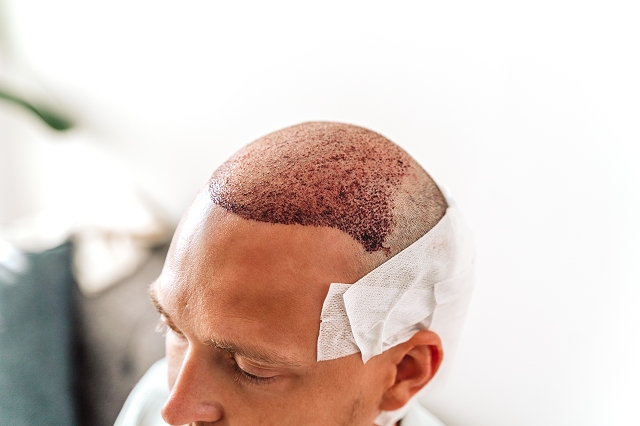Comprehensive Hair Glossary
Each of the following terms encapsulates not just a medical aspect of hair loss and treatment but also a deeply personal journey. They represent the struggles, hopes, and resilience of individuals dealing with hair-related issues, highlighting the emotional and psychological impacts that go hand in hand with the physical aspects. From the distress of experiencing hair loss to the relief of finding an effective treatment, each term is a chapter in someone’s personal story of self-acceptance, health, and transformation.
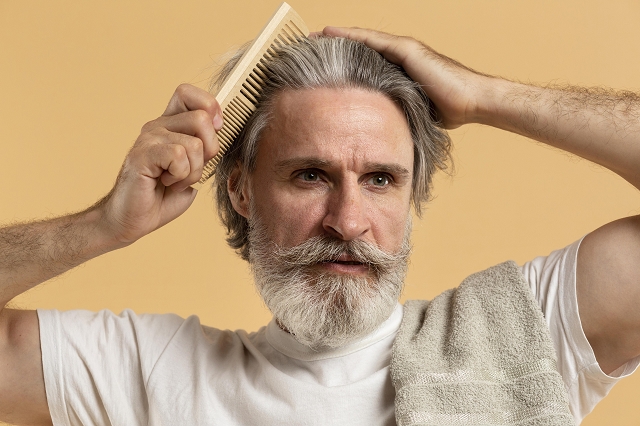
Aldactone: A well-known medication under the brand Aldactone, prescribed for managing high blood pressure and effective in treating hair loss in women.
Alopecia: A condition characterized by hair loss due to illness, a malfunction within the body, or genetic factors. It’s the medical term for hair loss.
Alopecia Areata: A condition where the body mistakenly creates antibodies against some hair follicles. This can be triggered by stress, genetic factors, or immune system issues, leading to sudden, smooth hair loss patches.
Alopecia Totalis: A complete lack of hair on the scalp, sometimes evolving from Alopecia Areata or other causes.
Alopecia Universalis: A rare condition leading to the absence of hair on the entire body, including eyelashes, eyebrows, and scalp, possibly evolving from Alopecia Areata or other causes.
Amino Acids: Essential components for protein synthesis. A lack of amino acids can negatively impact hair growth.
Amortization: The biochemical process where enzymes transform, like the conversion of Testosterone to Dihydrotestosterone.
Anagen: The active growth phase of hair, typically lasting from one to seven years.
Anagen Effluvium: Hair loss occurring during the growth phase, commonly associated with chemotherapy or radiation therapy.
Androgen: A term for male hormones, with testosterone being the most prominent.
Androgenetic Alopecia: A form of hair loss due to genetic factors and the influence of DHT on hair follicles, commonly known as pattern baldness in both males and females.
Anterior: Referring to the front part.
Antiandrogen: A substance that counteracts the effects of androgens by blocking their receptors, altering their metabolism, or reducing their production.
Aromatase: An enzyme complex vital in estrogen production, converting testosterone to oestradiol. It’s found in several body parts, including the brain, fat tissue, and reproductive organs.
Autograft: A tissue graft obtained from one’s own body.
Azelaic Acid: Commonly used in acne treatment, this acid hinders the enzyme involved in converting testosterone to DHT.
Benign Prostate Hyperplasia (BPH): A non-cancerous enlargement of the prostate gland in aging men, often leading to urination issues.
Biopsy: The extraction of tissue for microscopic analysis.
Bonding: The process of attaching a hairpiece to the scalp using adhesive.
Catagen: The transitional stage between hair’s growth and resting phases.
Chemotherapy: The use of toxic chemicals, often in cancer treatment, that can lead to temporary complete hair loss.
Club Hair: Hair that has ceased growing, distinguishable by its club-like root but will eventually be shed and replaced.

Cobble stoning: A complication from hair transplant “plug” procedures, leaving the scalp with a lumpy appearance.
Cortex: The main structural layer of the hair shaft, rich in keratin fibres, providing strength and size.
Crown: The topmost part of the head.
Cuticle: The hair’s protective outer layer, made of colorless keratin, giving hair its shine and partial strength.
Dermal Papilla: Located at the hair follicle’s base, this structure, rich in nerves and blood vessels, plays a crucial role in hair growth.
Dermis: The innermost layer of the two primary skin layers.
Diazoxide: A medication that widens blood vessels and promotes hair growth.
Dihydrotestosterone (DHT): A male hormone implicated in hair follicle miniaturization and hair loss, formed from testosterone and enzyme 5-alpha reductase interaction.
Donor Site: The area from which hair-bearing skin is removed for transplantation.
Double Blind Study: A research method where neither the participants nor the researchers know who receives the actual treatment.
Dutasteride: A medication inhibiting both types of 5-alpha reductase, by GlaxoSmithKline.
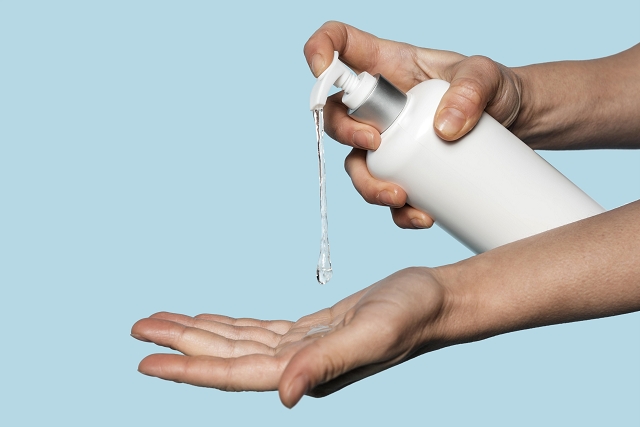
Epidermis: The outermost, protective layer of the skin.
Estrogen: A primary female hormone produced mainly by the ovaries.
Female Pattern Baldness (FPB): Gradual hair thinning across the entire head in women, influenced by genetics, age, and hormones.
5-Alpha-Reductase: An enzyme responsible for transforming testosterone into dihydrotestosterone.
5-Alpha-Reductase Inhibitors: Substances that prevent the conversion of testosterone to DHT by inhibiting the 5-alpha reductase enzyme.
Finasteride: The generic name for Proscar, a Merck-manufactured medication approved for benign prostate enlargement treatment and marketed as Propecia for hair loss treatment.
Flap: A hair replacement surgical method involving transplanting a piece of hair-bearing scalp to bald areas.
Follicle: A small sac under the scalp’s surface where hair grows.
Follicular Unit: Natural clusters of hair growing together and sharing the same blood supply.
Follicular Unit Extraction (FUE): A hair transplant technique involving the individual removal of follicular units.
Follicular Unit Transplantation: A sophisticated hair transplant method where hair is harvested and grafted in its natural follicular units.
Free Flap: A surgical procedure where a strip of scalp is moved from the head’s side/back to the front to create a hairline.
Frontal Alopecia: Hair loss occurring at the front of the head.
Gene Therapy: A treatment approach involving altering an individual’s genetic composition to treat diseases.
Genetic: Related to genes and their effects, determining inherited traits from biological parents.
Grafting: Various procedures for moving hair-bearing scalp from one area to another. Includes outdated methods like slit, micro, and mini grafting.
Grafts: Transplanted hair.
Gynecomastia: Excessive breast development in males.
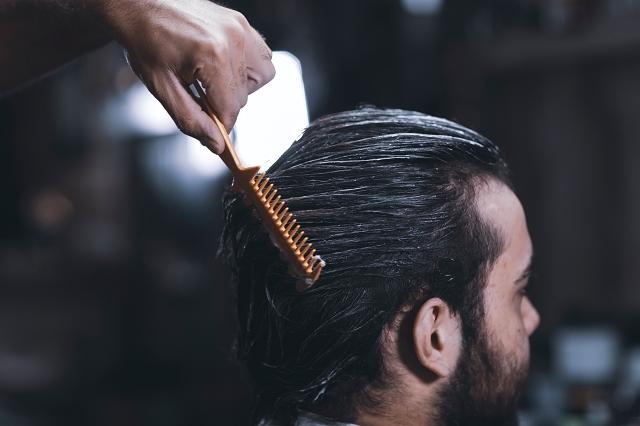
Hair lift: A surgical procedure to reduce bald scalp areas, considered unethical by many physicians.
Hair Cloning: A future possibility for unlimited donor hair in transplants, not yet available.
Hair Integration: Another term for hair weaving.
Hair Intensification: Also referred to as hair weaving.
Hair Matrix: The area where hair and its components (cortex, cuticle, medulla) are formed.
Hair Multiplication: Similar to hair cloning, a theoretical method to increase donor hair, currently unavailable.
Hair Shaft: The visible part of hair providing protection and warmth.
Hair Weaving: Attaching a hairpiece to existing hair through braiding or interweaving.
Hamilton Scale: A classification system for hair loss.
Hirsutism: Abnormally excessive hair growth.
Hormonal: About hormones, the body’s chemical messengers.
Hypertrichosis: Excessive hair growth all over the body.
Hypothyroid: A condition where the thyroid gland doesn’t produce enough hormones, possibly causing hair loss.

Inflammatory: Relating to inflammation, the body’s response to injury or abnormal stimuli.
Infundibulum: The upper part of the hair follicle.
Inhibitory Protein: A protein in healthy scalps that seems to prevent DHT binding, missing in androgenetic alopecia.
Intermediate Hairs: Hairs showing traits between vellus and terminal hairs.
Isthmus: The middle region of the hair follicle, typically housing the sebaceous gland.
Juri Flap: A surgical procedure transferring a large hair-bearing scalp section to the front, creating a hairline.
Keratin: A robust, insoluble protein forming hair and nails.
Ketoconazole: An anti-fungal agent with anti-androgen properties, found in Nizoral shampoo.
Lanugo Hair: The fine, unpigmented hair on fetuses and newborns, similar to vellus hair.
Linear Graft: An outdated hair transplant method using a strip of hair and skin.
Male Pattern Baldness (MPB): Common hair loss in men due to hormones, genetics, and age, often forming a U-shape balding pattern.
Medulla: A central cell zone in thick hairs.
Melanin: Pigment granules in hair fibers determining hair color.
Melanocyte: A cell containing melanin, influencing hair color.
Menopause: The end of menstrual cycles and estrogen production in women.
Merck & Co., Inc.: Manufacturer of Proscar and Propecia (finasteride).
Micrograft: A very small hair graft of one or two hairs.
Midline: The central region of the scalp.
Miniaturization: The process where DHT shrinks hair follicles, a key sign of androgenetic alopecia.
Minigraft: A small hair graft with three to eight follicles.
Minoxidil: A medication initially for high blood pressure, now used topically to slow hair loss or stimulate hair growth. Marketed as Rogaine.

Nonscarring Alopecia: Various hair loss types where the follicle remains intact, allowing potential hair regrowth.
Norwood Scale: A classification system for hair loss.
Papilla: A small root area at the hair base, receiving nutrients necessary for growth.
Placebo: A mock treatment resembling the test medication but without active ingredients.
Polysorbate 80: An emulsifier, claimed by some companies to promote hair growth.
Postauricular Flap: A surgical technique using hair-bearing scalp from behind the ear to form a hairline.
Posterior Scalp: The back of the head.
Preauricular Flap: A surgical method using scalp from the temple area to create a hairline.
Progesterone: A female hormone essential for reproductive processes.
Propecia: A brand name for finasteride, used to treat male pattern baldness.
Proscar: Finasteride is an FDA-approved treatment for benign prostate hyperplasia (BPH).
Prosthetic: An artificial replacement for a body part.
Punch Graft: A circular hair graft with ten to twenty hairs.
Recipient Site: The bald area where hair grafts are placed.
Rejection: The body’s refusal to accept transplanted tissue.
Retin-A: This is a widely recognized prescription treatment for acne, known to effectively combat hair loss in some cases, especially when used with minoxidil. However, it can lead to severe scalp irritation, potentially exacerbating hair loss.
Retroauricular Area: This term refers to the region located behind the ear.
Rogaine: Commonly known as the brand for minoxidil, a topical solution promoting hair growth. It’s available without prescription in 2% and 5% extra strength solutions.
Rotational Flap: A delicate surgical technique involving the rotation of a triangular section of hair-bearing scalp. This section is moved, often by 90 to 180 degrees, to cover a bald spot.
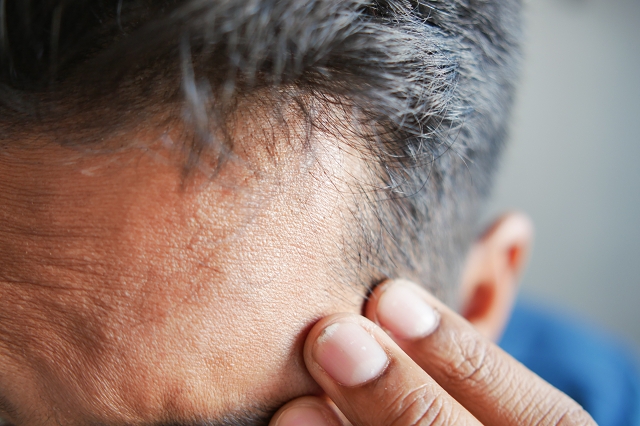
Saw Palmetto: This natural herb is celebrated for its effective antiandrogen properties.
Scalp Reduction: A surgical intervention that involves removing a portion of the bald scalp from a small central area and bringing the hair-bearing scalp closer together, effectively reducing the bald spot.
Scarring Alopecia: This condition manifests as patchy hair loss accompanied by visible scalp inflammation.
Scleroderma: A challenging skin and connective tissue disease that can lead to hair loss in affected areas.
Sebaceous Glands: These are vital glands located in hair follicles all over the body, secreting oil that nourishes both hair and skin.
Seborrheic Dermatitis: A skin condition characterized by small, discolored patches, often appearing on the face and scalp.
Sebum: A natural, oily secretion from sebaceous glands, essential for keeping hair smooth and shiny.
Senescent Alopecia: This type of hair loss is a natural part of aging. As we age, hair growth slows down and hair follicles shrink.
Shock Fallout: A condition often seen in hair transplantation, especially in men who still have considerable natural hair. The trauma from the procedure can trigger a shedding phase, but fortunately, this hair loss is sometimes temporary.
Slit Graft: A specific type of hair graft involving three to four hairs, inserted into a slit rather than a round hole.
SOD (Superoxide Dismutase): These are enzymes that combat harmful free radicals and have been found to stimulate hair growth while reducing hair loss.
Spironolactone: A diuretic medication that also acts as an antiandrogen. It’s used in treating androgen-related disorders like female pattern baldness and hirsutism and is known by its brand name, Aldactone.
Stretch Back: This is a post-surgical condition following scalp reduction. Due to the skin’s elasticity, the initially reduced bald area can widen over time, diminishing the effectiveness of the procedure.
Suture: A medical term for a stitch.
Suture Implants: This technique involves attaching a hairpiece by sewing it directly into the scalp.
Systemic Side Effects: These are widespread, undesirable effects caused by some medications, such as certain antiandrogens leading to reduced libido and breast enlargement in men.
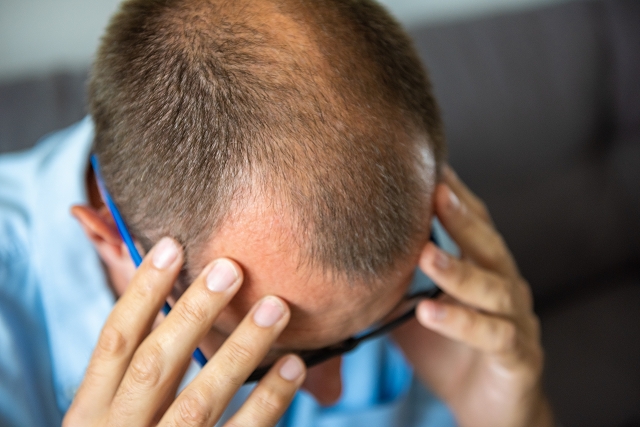
Telogen: The rest phase in the hair growth cycle, typically lasting around 3 months.
Telogen Effluvium: A common form of hair loss triggered by stressors like emotional trauma, major surgery, or illness. This condition can be delayed, occurring months after the stressful event, or chronic, persisting unresolved.
Telogen Loss: This refers to hair shedding during the natural resting phase.
Temporal Recession: Hair loss occurring in the temple area.
Terminal Hair: The thicker, pigmented hair that appears on various body areas like the scalp, face, and pubic region.
Testosterone: A male hormone produced by both the adrenal glands and testicles, essential for developing male characteristics.
Theory of Donor Dominance: The foundational theory behind hair transplantation, which posits that the genetic information of hair resides in the follicle, not in the area where it’s transplanted.
Tinea Capitis: A contagious skin disease caused by fungi, resulting in ring-shaped, scaly, and itchy patches.
Tissue Expansion: A preparatory step in surgical hair restoration involving a balloon-like device implanted under the scalp, gradually inflated to stretch the skin.
Topically: Applying a substance directly onto the skin.
Traction Alopecia: Hair loss caused by continuous pulling on the hair, often seen with hairstyles like braids or ponytails that exert tension on the scalp.
Tretinoin: The generic name for Retin-A, primarily prescribed for acne treatment.
Trichotillomania: A form of alopecia caused by habitual pulling and twisting of hair in a specific area, leading to hair loss. The condition usually improves once the habit stops, but severe cases can cause permanent damage.
Tunnel Graft: A method for securing a hairpiece involving skin grafts from behind the ear or hip, attached to the scalp to anchor the hairpiece.
Vasodilator: A type of medication designed to widen blood vessels.
Vellus Hair: Fine, barely visible hair, lacking the central medulla found in thicker terminal hairs.
Vertex: Refers to the crown area of the scalp.
Wigs: A heartfelt solution for those experiencing hair loss, offering a sense of normalcy and confidence. They come in various styles and materials, allowing individuals to maintain their appearance and self-esteem during challenging times.
Xenograft: A type of transplant involving tissue from a different species – a rare and experimental approach, often evoking mixed feelings of hope and uncertainty for those seeking new treatments for severe hair loss conditions.
Yeast Infections: These common infections can affect the scalp, leading to discomfort and hair loss. The emotional toll of dealing with these infections can be significant, impacting one’s self-image and daily life.
Zinc: An essential mineral, known for its role in maintaining healthy hair. A deficiency can lead to hair thinning, causing concern and anxiety among those affected. Supplementing with zinc can be a beacon of hope for improving hair health.
